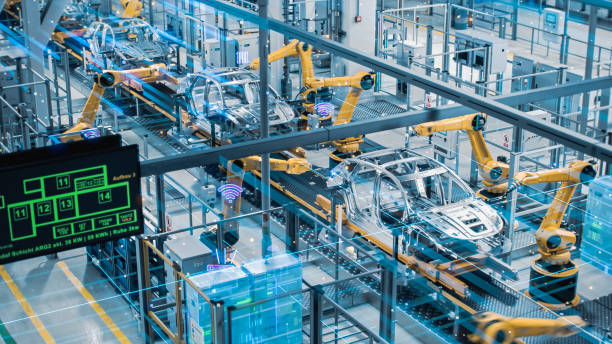Adopting Digital Twins to Improve Plant Performance
Implementing digital twins can help industrial plants model assets, processes, and entire operations to identify inefficiencies and test improvements virtually. This approach connects data from sensors, IoT platforms, and control systems to analytics and simulations, enabling measurable performance improvements across maintenance, energy use, and quality without disrupting production.

What is a digital twin in manufacturing?
A digital twin is a virtual replica of a physical asset, process, or system used in manufacturing to mirror real-world behavior. By linking sensor data, IoT feeds, and historical records, a digital twin enables teams to simulate process changes, predict failures, and validate product changes before applying them on the shop floor. In manufacturing environments, digital twins bridge operations and analytics so decisions are informed by real-time state and historical performance.
Digital twins support continuous quality monitoring by correlating production variables with product outcomes. When integrated with robotics, automation, and analytics platforms, a twin becomes a living model that helps optimize throughput while preserving quality standards.
How does IoT and analytics support operations?
IoT devices provide the data streams that keep a digital twin synchronized with physical equipment: temperatures, pressures, runtimes, and cycle counts feed analytics engines that detect trends and anomalies. Analytics turn raw IoT signals into actionable insights for operations teams, enabling condition-based control and smarter scheduling. This reduces unplanned downtime and improves overall plant efficiency by prioritizing interventions where they yield the most benefit.
Combining analytics with operations data helps identify bottlenecks in logistics and production flow. Predictive models informed by IoT can suggest parameter adjustments, rescheduling, or resource reallocations that reduce waste and improve delivery reliability.
How can automation, robotics, and logistics benefit?
Automation and robotics gain precision when guided by validated twin models. Simulating new robot paths, automated workflows, or material handling changes in a virtual environment reduces integration risk and shortens deployment cycles. Logistics planning—warehouse layouts, conveyor speeds, and line-side inventory—can be tested in the twin to quantify throughput impacts before capital expenditure.
Digital twins also enable scenario testing for peak demand or altered supply chain conditions, helping procurement and operations teams align inventory and transport choices with expected performance outcomes. This cross-functional visibility improves coordination between production and logistics.
What are maintenance, energy, and quality gains?
Maintenance strategies shift from reactive to predictive when a digital twin tracks degradation patterns and remaining useful life. Maintenance teams can schedule interventions based on condition and risk rather than fixed intervals, lowering downtime and spare parts costs. Energy performance is improved by modeling load distribution, identifying inefficient processes, and testing control strategies to reduce consumption without harming output.
Quality improvements come from linking process variables to product metrics in the twin. When analytics highlight which parameters most influence defects, teams can tighten controls, change setpoints, or update training to reduce variability. These integrated gains lead to better yield and lower rework rates.
What cybersecurity, procurement, and upskilling considerations are needed?
Introducing digital twins requires attention to cybersecurity because extended connectivity increases the attack surface. Secure IoT architectures, segmented networks, and robust identity management are essential to protect both operational technology and IT systems. Procurement must specify interoperable platforms, data standards, and support for future integrations to avoid vendor lock-in and ensure long-term value.
Upskilling is equally important: engineers, maintenance staff, and operators need training in analytics interpretation, digital twin configuration, and new maintenance workflows. Cross-disciplinary teams—combining domain experts, data scientists, and cybersecurity professionals—often deliver the best results by ensuring the twin reflects practical constraints and safety requirements.
Conclusion paragraph: Adopting digital twins in plant environments ties together automation, IoT, analytics, and operations to create a continuous improvement loop. When implemented with attention to cybersecurity, procurement choices, and workforce upskilling, twins can improve maintenance planning, reduce energy use, streamline logistics, and enhance quality. The technology is a tool to test and verify changes virtually, helping organizations make data-driven decisions while minimizing disruption to production.





